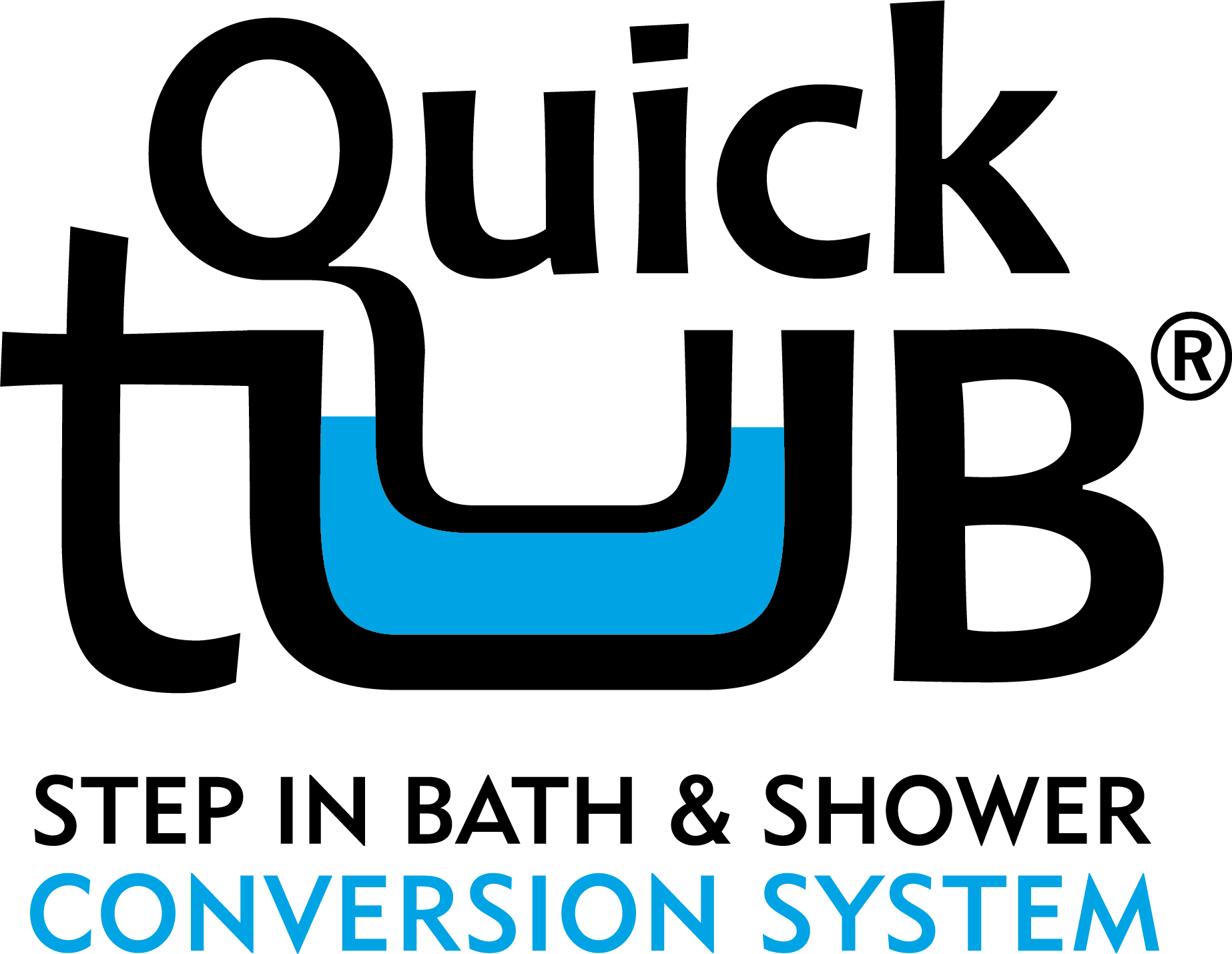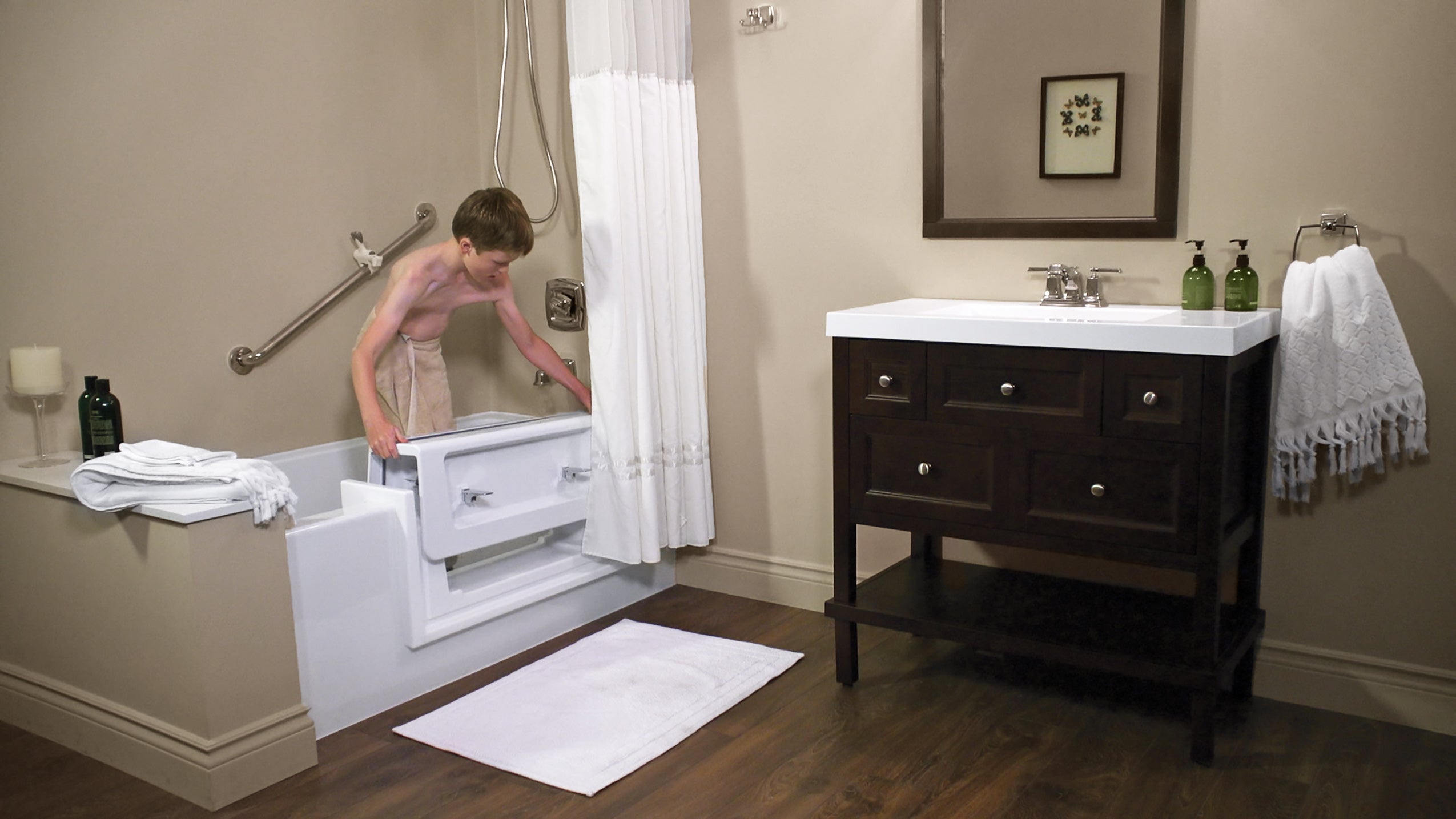You don’t need a remodel or a sledgehammer to make a bathroom safer and easier to use. For many families, the biggest challenge isn’t just cost, it’s space. Small bathrooms are already tricky to navigate, and when you add mobility concerns, aging in place goals or the need for handicap bathroom ideas, it can feel overwhelming. However, there are plenty of bathroom accessibility solutions that don’t require tearing down walls or pulling up tile.
Simple, affordable changes can make a real difference in comfort and safety. From smart lighting upgrades to non-slip mats and drill-free grab bars, accessible bathroom ideas can be put into place over a weekend without the disruption of a full remodel.
With the right tools and a planned-out approach, you can create a bathroom that’s safe, functional and welcoming, without taking on a remodel. Let’s talk more about how, though.
Why Remodels Aren’t Always the Answer
When people think of accessible bathroom ideas, the first thing that usually comes to mind is a full remodel. But honestly, not everyone has the budget or the space for major construction. Renters often can’t make permanent changes, and even homeowners may find that small bathrooms don’t allow for the traditional “ADA bathroom layout” you see in design guides. That doesn’t mean you have to settle for unsafe or inconvenient setups.
In fact, more than half of households still don’t have the bathroom accessibility solutions they actually need. That’s a huge gap, and it shows just how important non-remodel options are.
However, you can make meaningful improvements without tearing anything out. Simple updates can transform a small bathroom almost overnight. These changes aren’t just budget-friendly; some are also renter-friendly and easy to adjust if your needs change later on. In other words, you don’t need to knock down walls to create a safer, more senior-friendly bathroom design.
Foundational Safety First
Before adding extra gadgets or fancy features, the first step in any accessible bathroom design is safety. Most accidents in the bathroom happen because of slips, poor lighting or lack of support. However, the good news is that these problems are easy to fix without remodeling.
Start with the basics: non-slip solutions. A sturdy bath mat with suction cups can keep the shower or tub floor from becoming slippery, while adhesive treads or decals add grip right where it’s needed most. For small bathrooms that tend to flood when the shower runs, a collapsible water dam is an easy way to keep water contained and the floor dry, which helps prevent dangerous falls.
Good lighting is another simple upgrade that makes a big difference. Swapping out dim bulbs for brighter LEDs improves visibility, while motion-activated night lights can guide the way during late-night trips. If you’re caring for someone with sensory sensitivities, softer or warmer lighting can also reduce glare and make the space feel calmer.
Don’t forget grab bars, toilet safety frames or a walk-in shower solution (like a Quick Tub insert).
Adapting Bathroom Zones for Comfort & Independence
Once the basics are covered, the next step is to think about how each part of the bathroom can work better for everyday use. Senior-friendly bathroom designs often focus on small adjustments that make the toilet, shower and sink easier and safer to manage.
-
The Toilet: A raised toilet seat or safety frame can make sitting down and standing up far less stressful on the joints. For added independence, bidet attachments are easy to install and can improve hygiene without requiring a full bathroom remodel for seniors.
-
The Shower & Tub: Bathing is often the trickiest part of an elderly bathroom design. Simple additions like a shower chair, a transfer bench or a clamp-on tub rail provide security and comfort. A handheld showerhead that has a flexible hose is another thing that can really help your bathroom setup. It allows for seated showering and makes rinsing much easier. And with a Quick Tub Walk-Thru Insert, safe bathing starts with easier access to the tub itself, reducing the risk of slips before you even step inside.
-
The Sink & Vanity: Even the smallest changes here can make daily routines smoother. Faucet extenders and lever handle adapters are inexpensive fixes that add accessibility for those with limited grip strength. A tilting mirror can help someone who is seated or standing, and long-handled grooming tools cut down on the need to bend or stretch.
When each zone of the bathroom is adapted thoughtfully, it creates a space that promotes both comfort and independence, without requiring a complete remodel.
Smart Storage = Safer Bathrooms
Clutter is one of the biggest hazards in a small bathroom. A bottle on the floor or a towel draped in the wrong spot can easily become a tripping risk, especially for seniors or anyone using a walker. That’s why smart storage is such an important part of accessible bathroom ideas. It keeps everything within reach while leaving clear pathways.
Simple solutions like over-the-toilet shelving units, slim rolling carts or even tension rod organizers can create vertical storage without eating up valuable floor space. By keeping essentials off the ground and out of the way, you maintain the turning radius needed for wheelchairs and walkers while still having everything close at hand. A tidy bathroom isn’t just nicer to look at, it’s safer, too.
Bringing Tech into Accessibility
Technology doesn’t have to be complicated or too expensive to make a real difference in senior-friendly bathroom designs. In fact, a few renter-friendly upgrades can instantly make the space safer and easier to use. Voice-activated smart plugs, for example, let you turn lights on and off without fumbling for a switch. Touchless soap dispensers also cut down on mess while helping those with arthritis or limited grip strength wash up more comfortably.
Another helpful addition is a water temperature monitor. These simple devices give a clear readout so seniors don’t have to guess whether the water is too hot or too cold. These updates are affordable, easy to install and don’t require permanent changes, making them a great fit for both homeowners and renters looking for accessible bathroom designs that truly work in everyday life.
Quick Tub: A Game-Changer for Small Bathrooms
We’ve already touched on Quick Tub earlier, but it’s worth diving a little deeper. This bathtub conversion kit is a real game-changer for bathroom design for elderly family members, especially in smaller spaces. Instead of going through the stress and cost of a full remodel, Quick Tub converts a regular bathtub into a safe walk-in shower/tub hybrid. That means you can enjoy the convenience of handicap showers for small bathrooms without tearing everything apart.
The biggest benefit? Safety. With a lower step-in threshold, Quick Tub makes it easier to get in and out, which can reduce the risk of slips and falls. It’s one of the smartest walk-in shower ideas for elderly households because it combines convenience, comfort and peace of mind, even in the tightest of bathrooms.
Making a bathroom safe and accessible doesn’t have to mean a full remodel. Simple updates can add comfort and independence.
For a bigger impact, walk-in solutions like Quick Tub inserts transform a standard bathtub into a safer, easier-to-use space. This is great for small bathrooms where every inch counts. With these practical, budget-friendly updates, you can create a senior-friendly bathroom that promotes safety, independence and peace of mind, without the stress of a remodel.
FAQs
How do you make a small bathroom handicap accessible without remodeling?
You don’t need a full renovation to make a bathroom safer and more functional. Start with simple, non-permanent updates: grab bars, non-slip mats, raised toilet seats and handheld showerheads. Smart storage and better lighting also make a big difference. Even small changes at the sink, toilet and shower can improve safety and independence in tight spaces.
What are the best handicap bathroom ideas for seniors?
Focus on comfort, accessibility and safety. Raised toilet seats or frames, shower chairs or benches, and clamp-on tub rails are all practical options. Lever-style faucets, tilting mirrors and touchless soap dispensers can make daily routines easier. Combining these small updates with clear floor space and non-slip surfaces creates a senior-friendly bathroom that works for real life.
Are Quick Tub inserts safe for elderly bathrooms?
Yes! Quick Tub inserts are designed to make getting in and out of a bathtub much safer. They lower the step-in height, provide a stable, secure entry and reduce the risk of slips and falls. They’re perfect for small bathrooms where a full ADA remodel might not be possible, offering a practical and safe alternative.



Share:
How Walk-In Tubs Can Improve Independence for People with Mobility Issues
How to Prevent Bathroom Falls: Tips and Products That Help